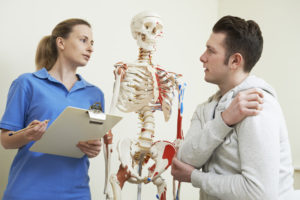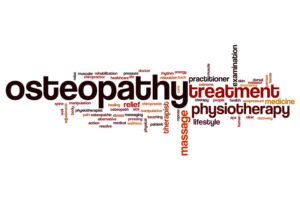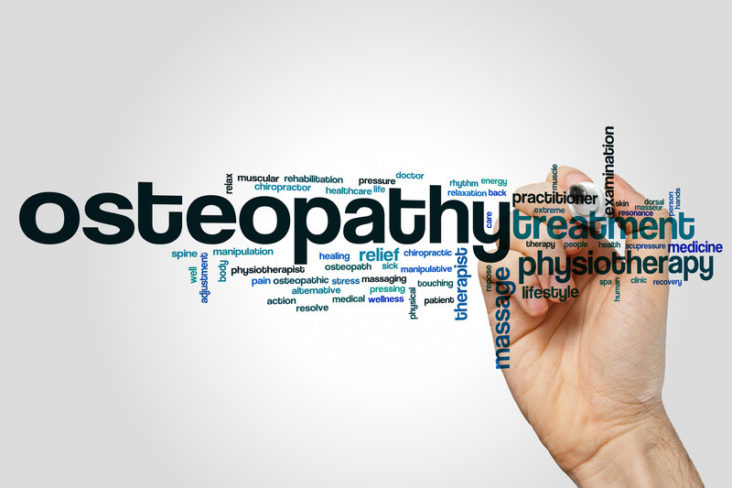Osteopathic medicine emphasizes overall health and the relation among the body’s nerves, muscles, bones, and organs. Osteopathic practitioners base diagnosis and treatment on the idea that the body’s systems are interconnected. Instead of treating specific symptoms or illnesses, they regard and treat the body as an integrated whole. Osteopathic medicine focuses on disease prevention and health maintenance.
Osteopathy is a form of manual therapy that focuses on total body health. It involves gentle, non-invasive manipulations aimed at improved structural alignment and mobility. By removing stresses and strains from the framework of the body, the goal of Osteopathy is to liberate the proper flow of blood, lymph and nerve impulses so that the body can self-heal and self-regulate, processes that have the ultimate goal of reaching homeostasis.

Not just bones!
Introduced by its founder A.T.Still in the mid 1800’s, the term Osteopathy combines the terms “os” (bone) with “pathos” (disorder, disease) to form one word – Osteopathy. However, this form of therapy deals with so much more then bones!
Brief history of Osteopathic Medicine
Osteopathic medicine is a unique form of American medical care that was developed in 1874 by frontier medical doctor Andrew Taylor Still. Dr. Still was dissatisfied with the effectiveness of 19th century medicine. He believed that many of the medications of his day were useless or even harmful. Dr. Still was one of the first in his time to study the attributes of good health so that he could better understand the process of disease.
In response, Dr. Still founded a philosophy of medicine based on ideas that trace back to Hippocrates, the Father of Medicine. The philosophy focuses on the unity of all body parts. He identified the musculoskeletal system as a key element of health. He recognized the body’s ability to heal itself and stressed preventive medicine, eating properly and keeping fit.
Dr. Still pioneered the concept of “wellness” 100 years ago. In today’s terms, personal health risks – such as smoking, high blood pressure, excessive cholesterol levels, stress and other lifestyle factors – are evaluated for each individual. In coordination with appropriate medical treatment, the osteopathic practitioner act as a teacher to help patients take more responsibility for their own well-being and change unhealthy patterns.
Sports medicine is also a natural outgrowth of osteopathic practice, because of its focus on the musculoskeletal system, osteopathic manipulative treatment, diet, exercise and fitness. Many professional sports team physicians, Olympic physicians and personal sports medicine practitioners are osteopaths.
The 3 tenets of Osteopathic Medicine
- The body is a unit; the person is a unit of body, mind, and spirit.
- The body is capable of self-regulation, self-healing and health maintenance.
- The Structure and Function of the human body are reciprocally interrelated.

The goal of Osteopathic Medicine
The goal of therapy is to find the source of a patient’s complaint via a thorough osteopathic assessment and to provide treatment based on the above-mentioned principles. Osteopathic treatment is not concerned solely with the symptoms of pain (for example), but rather is interested in finding the cause of that pain.
Another way of saying this is: The goal of osteopathy is to restore that proper balance and function of the body, allowing it to heal through its own natural processes. It works to balance your nervous, circulatory and lymphatic systems, improving your range of motion and relieving discomfort or other symptoms.
If you would like to have an osteopathic treatment, our own Courtney Wood, BA, M.OMSc is always accepting new patients. You can also see her info here. You can also book online with her using this link : https://noterro.com/calendars/bookOnlineStepOne/fe6c0295729ce423f16790ff778795a2
